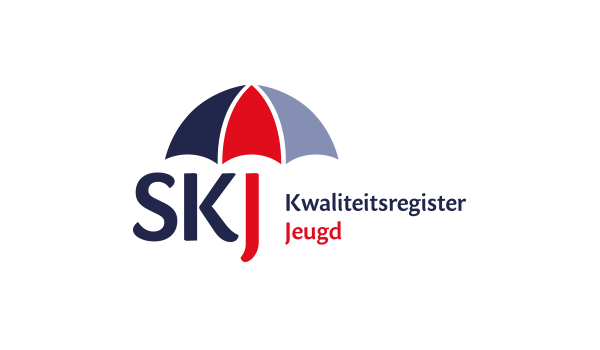Bilingual Kids Neuropsy Program
The Bilingual Kids Program
 Bilingual Kids Program is a treatment plan for children and adolescents able to speak and understand two languages. I address the mental, emotional and biological aspects of children development, through my commitment to evidence-based medicine, such as treatment methods that have been proven effective by scientific research and my believe that every child deserves to be considered as an individual with targeted intervention for allowing his/her full expression. I’m registered at the Stichting Kwaliteitsregister Jeugd (SKJ), Kamer Psychologen (Dutch Quality Register for Youth Care – Section: Psychologist).
Bilingual Kids Program is a treatment plan for children and adolescents able to speak and understand two languages. I address the mental, emotional and biological aspects of children development, through my commitment to evidence-based medicine, such as treatment methods that have been proven effective by scientific research and my believe that every child deserves to be considered as an individual with targeted intervention for allowing his/her full expression. I’m registered at the Stichting Kwaliteitsregister Jeugd (SKJ), Kamer Psychologen (Dutch Quality Register for Youth Care – Section: Psychologist).
Introduction to Bilingual Kids Program
Bilingualism is a multi-dimensional human phenomenon (Buchweitz and Prat, 2013) defined by Grosjean as follows: Bilingualism is the regular use of more than one language, and thus bilinguals are people who need and use more than one language in their everyday lives. We also differentiate between early and late bilinguals. Early bilinguals acquire their second language sometimes before the “critical” period for language learning defined as adolescence whereas late bilinguals acquire their second language after adolescence.
A large amount of research demonstrated that in addition to the benefit of being able to communicate in a multiple way in an increasingly globalized world, bilingual development determines generalized improvements in brain circuits associated to fundamental human cognitive abilities such as language and executive functions. Therefore scientific research disconfirmed the popular opinion often reporting that bilingual language development results in language delays. We are going to see in this article which are the main features of the bilingualism in children development.
Bilingualism and socioemotional well-being
The mental health and socioemotional well-being of children and adolescents are strictly related to their development. According to Han (2010), children’s socioemotional well-being, especially during the early school years, is critical for achieving academic goals, indeed children may have a difficult time learning to read if they have emotional and behavioral issues that distract them from academic tasks. Indeed, reading problems and learning difficulties may induce frustration and disruption in young children. In this perspective, many studies have been done in order to investigate the possible connection between bilingualism and children’s socioemotional trajectories during their early school years. Results showed that bilingualism should be viewed as a strength for promoting children’s success in school.

Language is very important for a child’s social development, mainly in the early school years, when young students confront issues of social comparison with peers. A negative effect of social comparison may have severe implications for children, indeed rejection by peers in early years of schooling is related to:
- lower academic achievement
- a greater likelihood of grade retention and/or dropping out of school
- a greater risk of delinquency and committing juvenile offenses in adolescence.
For all the aforementioned reasons, language is an important feature of children development and it is two times true in bilingual children.
A large amount of research showed the benefits of being bilingual compare to being monolingual, such as:
- higher academic performance
- higher self-esteem
- stronger family cohesion
- greater cognitive flexibility and abstract thinking skills
- better executive function abilities
- greater selective attention and inhibitory control
- more positive behavior than their native-born peers
- benefit of a cognitive reserve that seems to protect an individual from cognitive decline that occurs with aging and/or dementia
Advantages of bilingualism in cognition emerge on 24-mpnths-olds toddlers
Research over the past decades has provided evidences that growing up speaking at least two languages lead to a number of linguistic and cognitive differences in both children and adults. Dubois and colleagues (2011) demonstrated that such effects are already present in 24-months-olds toddlers, so it is critical for parents raising bilingual children to know the implications for their child’s development. When bilingual toddlers start to acquire language, for example, they learn similar sounding words in a word learning task a few months later than their monolinguals peers. However, bilingual infants of the same age have better performance than monolinguals in learning word-object associations when the phonetic conditions favor their input. It is interesting that in relation to vocabulary development in bilingual first language acquisition, bilingual children produce their first words at around the same time as monolingual children.
A linguistic experience such as bilingualism may help children in enhancing their understanding of the structure and properties of language and, as already shown, also lead to the precocious development of cognitive processes not confined to linguistic tasks.
 Executive functioning is a complex cognitive ability that allow human being to adapt to the environment. There are different components involved in executive functions such as response inhibition, responsible for the conscious control of thought and action, shifting of mental sets, updating information in memory and planning ability.
Executive functioning is a complex cognitive ability that allow human being to adapt to the environment. There are different components involved in executive functions such as response inhibition, responsible for the conscious control of thought and action, shifting of mental sets, updating information in memory and planning ability.
Research has shown that bilinguals above 4 years of age show better control over these executive processes than monolingual peers and some form of bilingual advantage in executive control emerges also much earlier. Bilingualism therefore brings linguistic and cognitive advantages, however there are some differences in the developmental trajectories compared to monolinguals children and parents and educators should be aware in order to avoid worries and to support their children in a functional way.
References
Han, W.J. (2010). Bilingualism and socioemotional well-being, Children and Youth Services Review, 720-731.
Dubois, D.P., Blaye, A., Coutya, J., Bialystok, E. (2011). The effects of bilingualism on toddlers’ executive functioning. Journal of Experimental Child Psychology, 108, 567–579.
Buchweitz, A. and Prat, C. (2013). The bilingual brain: Flexibility and control in the human cortex. Physics of Life Reviews, 10, 428-443.
Paradis, M. (2008). Bilingualism and neuropsychiatric disorders. Journal of Neurolinguistics, 21, 199-230.
Bilingual Kids Treatment Plan
The treatment plan for bilingual kids and adolescent consists of:
- Training session for parents on “Bilingual children development: effects on linguistic and cognitive abilities”
- Behavioral assessment of cognitive and linguistic abilities
- Enhancement cognitive training addressing cognitive and linguistic deficits
- Follow up and evaluation of training’s results
Reimbursements
Therapy and assessments for Children and Teenagers up to 18y with Functioning Psychology are Fully or Partially reimbursed.
_________________________
